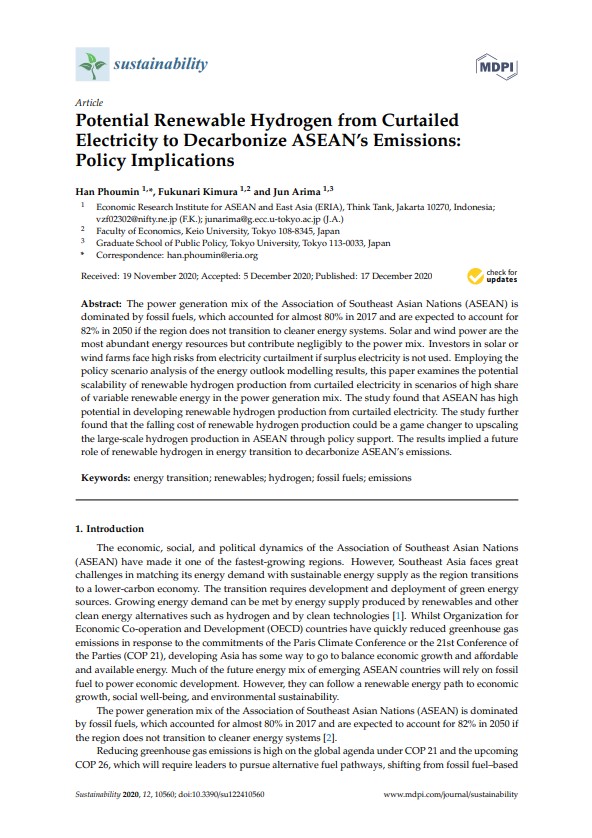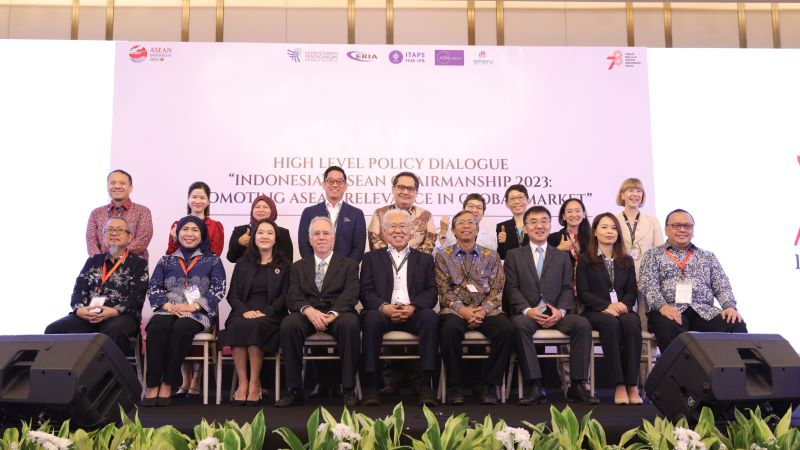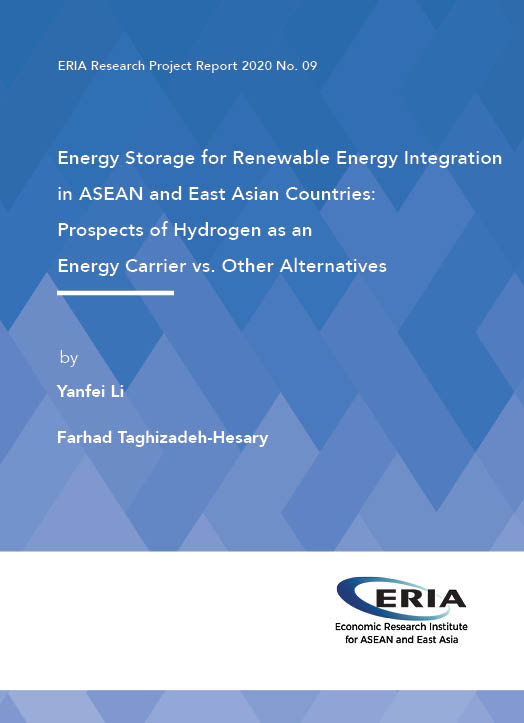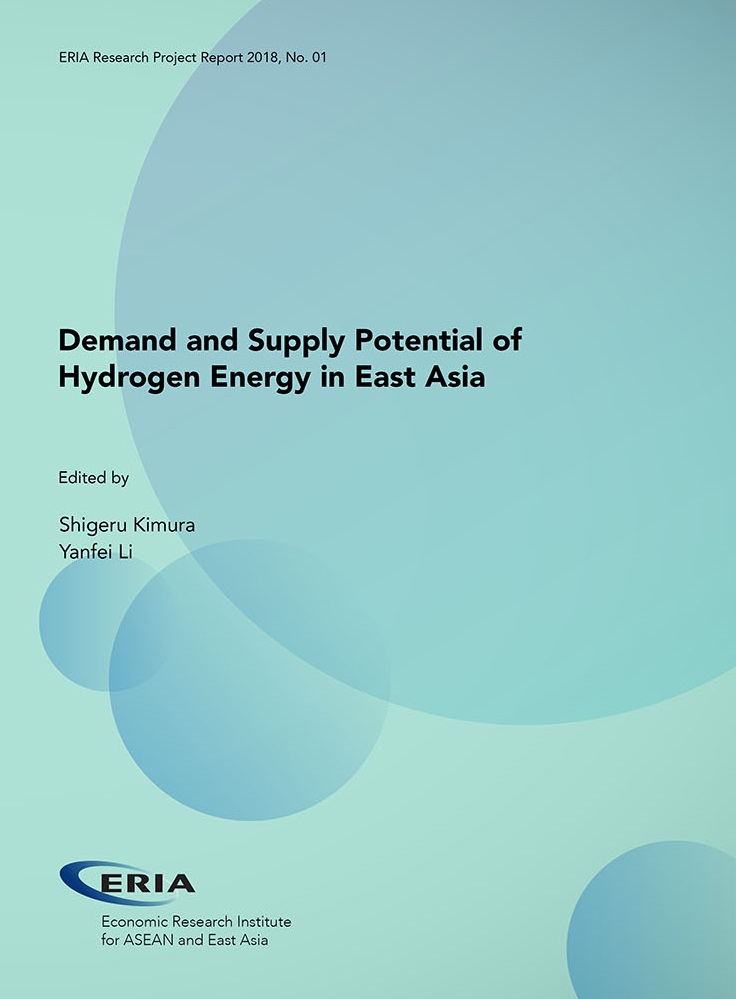Potential Renewable Hydrogen from Curtailed Electricity to Decarbonize ASEAN’s Emissions: Policy Implications

Date:
17 December 2020Category:
Energy, Journal ArticlesType:
Journal ArticlesTags:
energy transition, renewables, Hydrogen, fossil fuels, emissions, renewable energyPrint Article:
About the Journal
Sustainability, Volume 12, Issue 24, first published on 17 December 2020, https://doi.org/10.3390/su122410560 (registering DOI)
(This article belongs to the Special Issue Secure and Sustainable Energy System)
Author
- Han Phoumin, Economic Research Institute for ASEAN and East Asia, Jakarta, Indonesia
- Fukunari Kimura, Faculty of Economics, Keio University, Tokyo, Japan
- Jun Arima, Graduate School of Public Policy, Tokyo University, Tokyo, Japan
Abstract
The power generation mix of the Association of Southeast Asian Nations (ASEAN) is dominated by fossil fuels, which accounted for almost 80% in 2017 and are expected to account for 82% in 2050 if the region does not transition to cleaner energy systems. Solar and wind power are the most abundant energy resources but contribute negligibly to the power mix. Investors in solar or wind farms face high risks from electricity curtailment if surplus electricity is not used. Employing the policy scenario analysis of the energy outlook modelling results, this paper examines the potential scalability of renewable hydrogen production from curtailed electricity in scenarios of high share of variable renewable energy in the power generation mix. The study found that ASEAN has high potential in developing renewable hydrogen production from curtailed electricity. The study further found that the falling cost of renewable hydrogen production could be a game changer to upscaling the large-scale hydrogen production in ASEAN through policy support. The results implied a future role of renewable hydrogen in energy transition to decarbonize ASEAN’s emissions.




